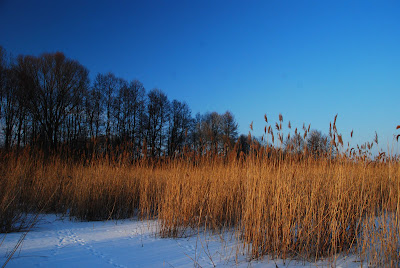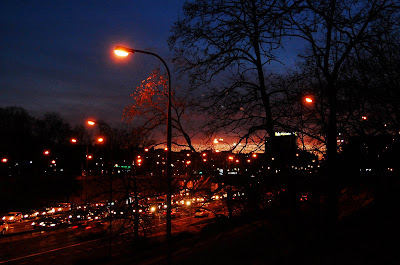The night calm was pierced by the distant shrieking whistle of the night mail as it thundered over the Staverton viaduct shortly before plunging into the Catesby tunnel. The Reverend Herbert Whyteside lay in bed, awake; he'd been awake for a long time. Downstairs in the study the clock chimed; it was quarter past two; the train was on time. It was another night when sleep would not come to him.
May 1921. Earlier that year, his older son Matthew had passed away at the nursing home. The boy had been confined there after a shell explosion left him crippled, just weeks before the end of the Great War. The Reverend Whyteside's younger son Timothy was killed during the Battle of Arras a year and half earlier. After the death of Matthew, the Reverend Whyteside’s wife tried to commit suicide. She ended up causing permanent brain damage brought on by oxygen starvation, and was committed to Rugby Asylum.
So the Reverend Whyteside was left alone in the vicarage with his daughter Constance, an ungainly girl prone to sadness knowing that fate would be unlikely to ever provide her with a husband, especially with so many young men having lost their lives in the War.
That May night, Herbert was as usual dwelling on the loss of both of his sons and the insanity of his wife. These thoughts would not leave him. Tonight something new was troubling him, some memory he thought he'd successfully pushed from his mind. He got out of bed and went downstairs to his study. Through the window he could see a full moon outside and a cloudless sky. Reverend Whyteside lit the gas lights and approached the bookcase, looking for a box of old sermons. Each Sunday after service, he'd file away his hand-written notes, a habit he'd maintained since moving in as the vicar of Priors Marston nearly 30 years ago.
He searched through the well-organised box files and found the year – 1914, the month – August... and... Sunday 8th August. The first Sunday after the declaration of War. He pulled it out a foolscap sheet of paper and started reading. He could not believe how readily he'd swallowed the lies, the banality of what he'd written. "Over by Christmas, our lads victorious, give the Hun a bloody nose, good cheer, chance to play up and play the game, (he remembered titters from the congregation)
"Dulce et decorum est pro patria mori" (those who knew their Latin were more serious now). He looked at his words and remembered the spirit in which they were said. Thinking back to that mellow August morn, when God was in His Heaven, God – an Englishman, how could that God have allowed the Empire to lose so many men, how could that God have allowed him to lose both his sons. He could see them now; sitting before him in church with their sister and mother; Timothy, still at Rugby School then, and Matthew, home from Cambridge where he was reading Divinity. Boys, just boys; now under the earth. And for what purpose?
Herbert took off his reading glasses and sat back, paper in hand. He poured himself a Scotch, which eased the grief just a little. He could hear footsteps on the stairs. Constance popped her head around the door. “Can't sleep, Papa?” “No, I can't,” he replied irritably.
Hiding the sermon under other papers in shame lest she should see it, he groped around for something to say. His daughter, half a head taller than he, heavy-boned and plain-featured, was not an easy person for him to get along with. While he had loved her dearly as a child, as she grew older, he found it increasingly hard to communicate with her. It was only when, in the solitude of the church, he playing hymns on the organ with his daughter accompanying him on the flute, did they feel truly comfortable in one another's presence.
Constance stood in the doorway. “Papa – do you remember, when Matthew and Timmy and I, when we were small, one night – I think it was Easter Sunday – you woke us up and we all went for a walk with you and Mama and the dogs – down to the river... it was a night like this; a full moon, no clouds – Papa, let's go for a walk together...?”
Why not, he thought; maybe the walk would stop his mind from dwelling on their loss. He nodded assent, put away his old sermon, filed the box where it had come from, and said, “Let's get dressed and go. I'll take old Folly from the kennel; let's aim to set off in before the clock strikes three."
The Reverend Whyteside, dressed in tweed trousers and thornproof jacket, stout walking shoes and dog collar – without which he never left the house – waited by the large kitchen table for his daughter to join him. Constance came down in her mother's black coat and an incongruous white cloche hat. Slipping into a pair of wellington boots, she opened the back door to the courtyard followed by her father.
With their black Labrador Folly on a leash, they set off along Vicarage Lane towards Priors Hill. The night was beautiful, the moon casting strong shadows of trees and buildings and hedgerows, so many stars so clear against the blackness. Constance took her short, stout father by the arm. They walked in silence. Suddenly she asked: “Papa – do you still believe in Jesus?”
Part II here.
This time last year:
Oligocene water from Jeziorki
This time two years ago:
Heavy overnight snow
This time three years ago:
New house building underway
 Above: Krakowskie Przedmieście
Above: Krakowskie Przedmieście Above: church at Szkrzydlna, near Dobra
Above: church at Szkrzydlna, near Dobra Above: the road back from Dobra
Above: the road back from Dobra Above: Palace on the Water, Łazienki Park
Above: Palace on the Water, Łazienki Park Above: Dom SARP on Foksal, headquarters of the Polish architects' society.
Above: Dom SARP on Foksal, headquarters of the Polish architects' society.








 Picking up on Paddy Ney's perennial subject of the
Picking up on Paddy Ney's perennial subject of the 



































